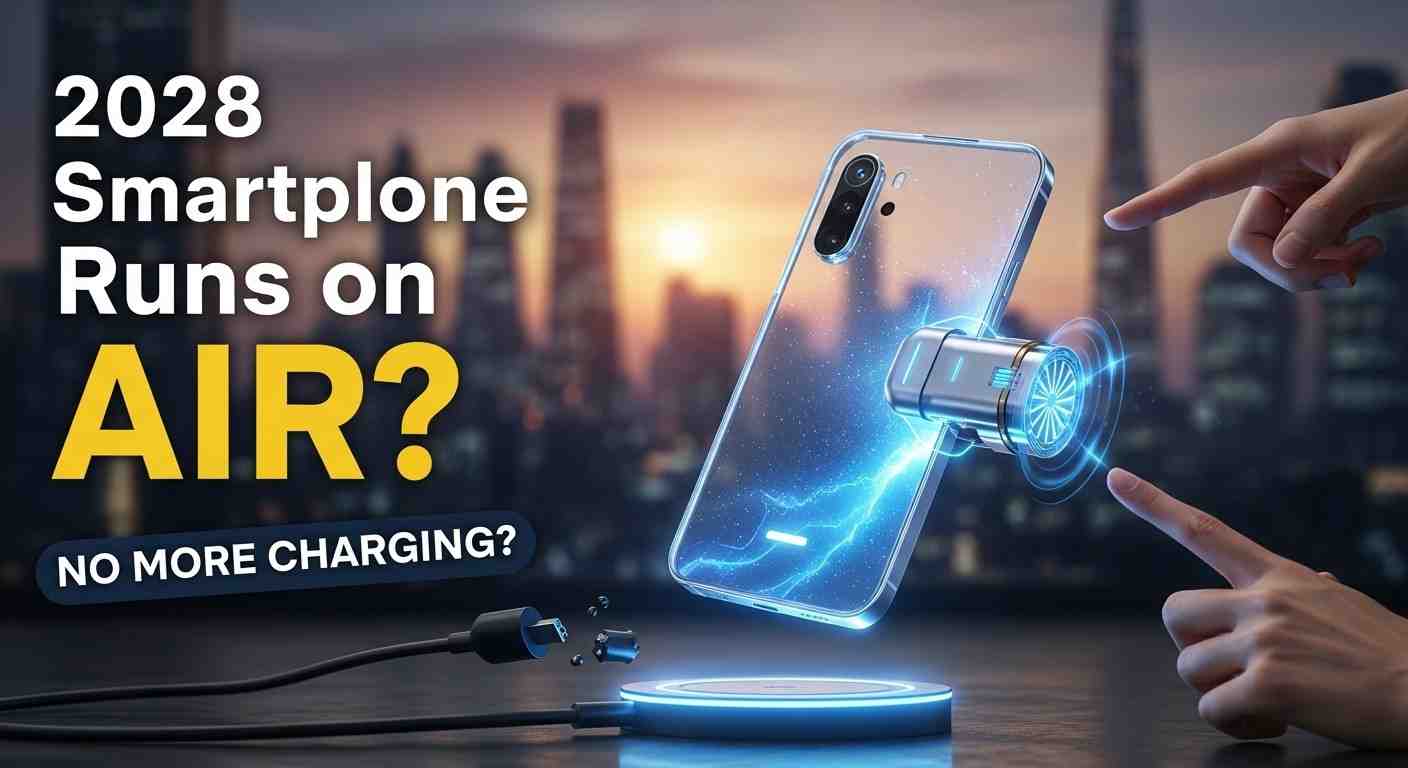Introduction
Charging your phone every night has become a frustrating ritual we all accept. But what if that routine vanished in 2028? Imagine a smartphone that doesn’t need to be plugged in, doesn’t need wireless pads, and instead could pull power from the air around you. Sounds unbelievable, right? Yet, researchers and smartphone makers are quietly working toward this breakthrough, and the whispers about a 2028 smartphone that runs on air are creating serious curiosity.
The Big Shift: Energy Harvesting Smartphones
The concept of a phone that doesn’t need charging is rooted in energy harvesting technology. Scientists and engineers are experimenting with ways for devices to capture and convert ambient energy into usable battery power.
Possible Power Sources in 2028
-
Radio Frequency (RF) Signals: Wi-Fi, 6G, and even satellite waves could be tapped to generate energy.
-
Solar Nanotechnology: Ultra-thin solar layers built directly into the display glass.
-
Thermoelectric Sensors: Converting your body heat into electricity.
-
Ambient Environmental Energy: Pulling small amounts of energy from air vibrations, electromagnetic fields, or surrounding light sources.
Why “Air Charging” Smartphones Make Sense
Over the years, smartphones have evolved by removing cables step by step:
-
First came the removal of headphone jacks.
-
Then came wireless charging pads.
-
eSIMs replaced physical SIM cards.
The next natural step is power without contact. By 2028, this dream could be closer than we think.
Benefits of a Smartphone That Runs on Air
A portless, endlessly powered phone could completely change how we use devices:
-
No Charging Hassles – Forget overnight charging or carrying power banks.
-
Slimmer & Sleeker Design – With no charging ports, smartphone designs can be more minimalist.
-
Environment-Friendly – Less dependence on electricity and fewer accessory wastes.
-
Always On – Your phone is always alive, powering itself as long as you’re in range of energy sources.
Challenges That Must Be Solved First
It all sounds exciting, but before we get carried away, here are the hurdles:
-
Energy Efficiency: Harvesting air power must provide enough energy for heavy use.
-
Network Interference: Tapping into RF signals could bring compatibility and safety questions.
-
Safety Regulations: Countries will regulate how much air-based energy can be transmitted without health risks.
-
Cost of Technology: At first, these phones may be too premium for mass adoption.
What Experts Predict for 2028
Industry analysts believe that hybrid smartphones could appear first—phones that combine ultra-efficient batteries with small-scale ambient charging. By the late 2020s, fully air-powered devices might be possible as 6G networks and nano-scale technologies become mainstream.
This won’t just make our lives easier, it might also revolutionize how other gadgets around us—like smartwatches, earbuds, and even IoT home devices—stay charged without cables.
Conclusion
The idea of a smartphone that runs on air by 2028 may sound like science fiction, but every great technology once did. As research accelerates, the possibility of never charging your phone again is moving closer to reality.
Would you welcome a future where your phone powers itself from the air—or do you think the safety risks would make you hesitate?

.jpeg)
.jpeg)
.jpeg)
.jpeg)
.jpeg)
.jpeg)
